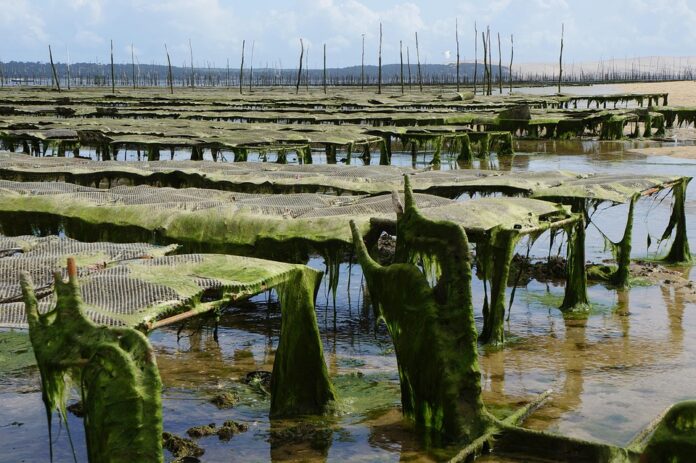Aquaculture, also known as fish farming, plays a crucial role in meeting the global demand for seafood. As the world’s population continues to grow, the aquaculture industry is expected to expand significantly in the coming years. In this report, we will explore the top 10 aquaculture producing countries in the world in 2025.
China
China has long been the leader in global aquaculture production, and it is expected to maintain its position in 2025. The country’s vast coastline and extensive network of rivers and lakes provide ideal conditions for aquaculture operations. China produces a wide variety of seafood, including fish, shrimp, and shellfish. In 2020, China accounted for over 60% of the world’s total aquaculture production.
Key Statistics:
– In 2020, China produced over 64 million metric tons of seafood through aquaculture.
– The Chinese aquaculture industry is valued at over $100 billion.
India
India is another major player in the global aquaculture industry. The country’s vast coastline and numerous inland water bodies provide ample opportunities for aquaculture production. India is known for its shrimp farming industry, particularly in the states of Andhra Pradesh and Tamil Nadu. In 2020, India was the second-largest aquaculture producer in the world.
Key Statistics:
– In 2020, India produced over 7 million metric tons of seafood through aquaculture.
– The Indian aquaculture industry is valued at over $10 billion.
Indonesia
Indonesia is a significant player in the global aquaculture industry, thanks to its extensive coastline and abundant marine resources. The country produces a wide variety of seafood, including fish, shrimp, and seaweed. In 2020, Indonesia was the third-largest aquaculture producer in the world.
Key Statistics:
– In 2020, Indonesia produced over 6 million metric tons of seafood through aquaculture.
– The Indonesian aquaculture industry is valued at over $8 billion.
Vietnam
Vietnam has emerged as a major player in the global aquaculture industry in recent years. The country’s long coastline and extensive network of rivers and lakes provide ideal conditions for aquaculture production. Vietnam is known for its production of shrimp and catfish. In 2020, Vietnam was the fourth-largest aquaculture producer in the world.
Key Statistics:
– In 2020, Vietnam produced over 5 million metric tons of seafood through aquaculture.
– The Vietnamese aquaculture industry is valued at over $7 billion.
Norway
Norway is a key player in the global aquaculture industry, particularly in the production of salmon. The country’s cold, clean waters provide ideal conditions for salmon farming. Norway is known for its high-quality, sustainable aquaculture practices. In 2020, Norway was the fifth-largest aquaculture producer in the world.
Key Statistics:
– In 2020, Norway produced over 1.5 million metric tons of seafood through aquaculture.
– The Norwegian aquaculture industry is valued at over $6 billion.
Chile
Chile is a major player in the global aquaculture industry, particularly in the production of salmon and trout. The country’s long coastline and cold, clear waters provide ideal conditions for salmon farming. Chile is known for its high-quality, sustainable aquaculture practices. In 2020, Chile was the sixth-largest aquaculture producer in the world.
Key Statistics:
– In 2020, Chile produced over 1 million metric tons of seafood through aquaculture.
– The Chilean aquaculture industry is valued at over $5 billion.
Japan
Japan is a significant player in the global aquaculture industry, particularly in the production of seaweed and oysters. The country’s long coastline and rich marine biodiversity provide ample opportunities for aquaculture production. Japan is known for its high-quality, sustainable aquaculture practices. In 2020, Japan was the seventh-largest aquaculture producer in the world.
Key Statistics:
– In 2020, Japan produced over 1 million metric tons of seafood through aquaculture.
– The Japanese aquaculture industry is valued at over $4 billion.
Thailand
Thailand is a key player in the global aquaculture industry, particularly in the production of shrimp and fish. The country’s extensive network of rivers and canals provides ideal conditions for aquaculture production. Thailand is known for its high-quality, sustainable aquaculture practices. In 2020, Thailand was the eighth-largest aquaculture producer in the world.
Key Statistics:
– In 2020, Thailand produced over 1 million metric tons of seafood through aquaculture.
– The Thai aquaculture industry is valued at over $3 billion.
Ecuador
Ecuador is a major player in the global aquaculture industry, particularly in the production of shrimp and tilapia. The country’s long coastline and rich marine biodiversity provide ample opportunities for aquaculture production. Ecuador is known for its high-quality, sustainable aquaculture practices. In 2020, Ecuador was the ninth-largest aquaculture producer in the world.
Key Statistics:
– In 2020, Ecuador produced over 600,000 metric tons of seafood through aquaculture.
– The Ecuadorian aquaculture industry is valued at over $2 billion.
Philippines
The Philippines is a significant player in the global aquaculture industry, particularly in the production of milkfish and tilapia. The country’s extensive network of islands and inland water bodies provides ample opportunities for aquaculture production. The Philippines is known for its high-quality, sustainable aquaculture practices. In 2020, the Philippines was the tenth-largest aquaculture producer in the world.
Key Statistics:
– In 2020, the Philippines produced over 500,000 metric tons of seafood through aquaculture.
– The Philippine aquaculture industry is valued at over $1 billion.
In conclusion, the top 10 aquaculture producing countries in the world in 2025 are expected to play a crucial role in meeting the growing global demand for seafood. These countries have the natural resources, infrastructure, and expertise to continue expanding their aquaculture production and contribute significantly to the global seafood market.


